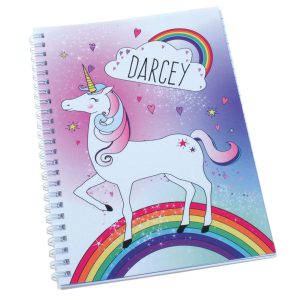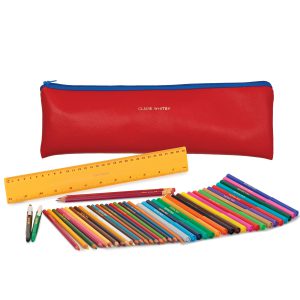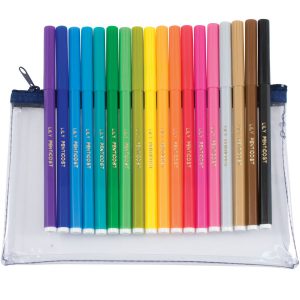How to teach a young child to write
Encouraging a young child to write requires creativity so that each day feels fresh and engaging. To celebrate National Stationery Week and its motto #WritingMatters, we’ve been asking parents for tips on how they create a positive learning culture at home that promotes writing as a fun and accessible activity for all ages. This handy guide combines their tips with our own to provide a comprehensive resource for learning outside the classroom.
Learning happens when you make activities fun
Home educator and writer Kelly Allen at kellyallenwriter.com told us how she approaches writing with children at home: ‘We home educate, so we tend to encourage writing by writing ourselves and together as a family. Learning happens when you make activities fun and interesting, so my children love to write shopping lists, short stories, letters to each other and other family and friends. I don’t believe in forced learning, so for me it’s all about fun and enjoyment, as well as lots of encouragement.’
Use reading as a starting point
Reading and writing are closely intertwined: understanding that the squiggly lines on a page represent spoken words and numbers, and applying words heard in conversation to printed text.
Just as many writers are also accomplished readers, often exploring different genres to pick up different writing styles, children learn the mechanics of writing through reading – from sentence structure to how spoken words look on a page.
Family and lifestyle blogger Vicki at Mumma And Her Monsters recommends Ruth Miskin reading and writing training: “Its amazing. My daughter has learnt so much in such a short space of time through her training.”
Look for books with repetitive and rhyming words so that your child can see how similar sounds are printed on a page. Practice with a book until parts become memorised and your child knows the first letters of a word based on sound.

Lend a guiding hand
Lu at Happy Matters told us that her best tip is “Patience”. Her advice includes playing games like hangman, “never saying ‘no that’s not right’” but rather “oh, great try! Maybe try it like this though” and writing with your child, holding their hand for guidance.
Make time for shared writing activities
One of the best ways to encourage a young child to learn is to do something together. Shared writing is great for breaking down writing tasks into fun, digestible activities that you can do together. Simple shared writing activities to try at home include:
- A ‘write aloud’ story: act as a scribe for your child as they contribute ideas for a story out loud. As they see their words being translated into print, they’ll be able to understand the relationship between spoken and written language and how their spoken words look on a page.
- Create a local map together: use landmarks that your child is familiar with – your house, the garden, the local shop, a road or train line, a friend’s house – as starting points for your map, which you can annotate with names and words as you draw – a perfect poster for their bedroom wall.
- Tracing with dots or dashes: write your child’s name using dots or dashes which they join up using pencil or pen. Perfect presentation isn’t the aim here, so remember to give praise when your child tries to replicate your work.

Discover the art of mark making
Debbie at Squidgy Doodle has written a brilliant blog exploring the art of mark making as a first step toward writing. Writing begins as random scribbles as toddlers, which progresses to controlled scribbling then lines and patterns. Eventually, your child will try to turn these scribbles into his or her name or simple words.
Given the importance of mark making for writing development, encourage all attempts no matter how silly or incomprehensible. Ideas to encourage mark making include:
- Making letter marks on a nature walk using sticks/leaves/feathers etc with paint
- Mark making in sand at the playground
- Scribbling outside using colourful chalk
Invest in bright and engaging stationery
Pens, notebooks, rubbers and other stationery essentials which are bright and inviting are more likely to be used! Invest in a stationery stash, kept in an accessible place, so they can jot down a note or scribble whenever they feel like it.
We recommend the following products for building up a starter stationery kit:
Personalised notebook: £7.50
Personalised pencil case & pencil set: £22
18 named felt tip pens and clear case: £12.99
10% off all personalised stationery for a limited time!
We’re offering a 10% discount on our website until the 29th of April. Simply enter the code PEN at the checkout to receive a discount for use on any of our personalised stationery products, from pens and notebooks to pencil cases and named rubber stamps – great additions to any school bag!
Get involved with National Stationery Week on Twitter by using the hashtags #WritingMatters & #natstatweek between 23-29 April.


